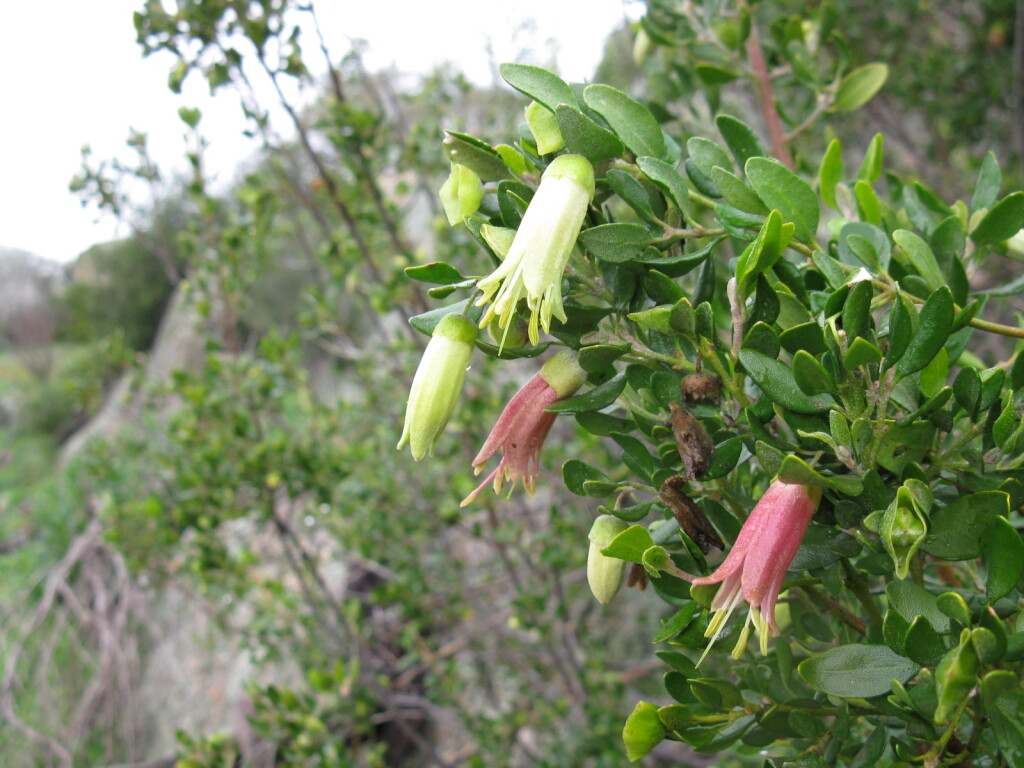Correa glabra var. glabra
Rock CorreaUsually an erect shrub to 2.7 m high; branches weakly tomentose. Leaves papery to subcoriaceous, narrow- to broad-elliptic or occasionally obovate, 1–4 cm long, 4–17 mm wide, apex obtuse to rounded, base rounded to cuneate, upper surface c. smooth and soon glabrous, lower surface glabrous or glabrescent, margin entire. Flowers solitary, terminal on short axillary shoots, c. pendent; pedicel 2–4 mm long; bracteoles basal, linear to oblanceolate, 4–7 mm long, deciduous; calyx hemispherical, 3–5 mm long, c. truncate, glabrous to sparsely and minutely grey-tomentose, becoming flattened and closed after anthesis; corolla cylindric to c. funnel-shaped, 1.5–4 cm long, petals fused, pale green to pale yellow; stamens exserted to c. half the length of the corolla, filaments widened at base. Flowers Mar.–Nov.
LoM, MuM, Wim, VVP, VRiv, GipP, OtP, Gold, CVU, GGr, DunT, NIS, HSF. Also Qld, NSW.
Hybridizes with C. reflexa, the progeny often having a reddish flush to the corolla.
Duretto, M.F. (1999). Rutaceae. In: Walsh, N.G.; Entwisle, T.J., Flora of Victoria Vol. 4, Cornaceae to Asteraceae, pp. 153–197. Inkata Press, Melbourne.
 Spinning
Spinning

